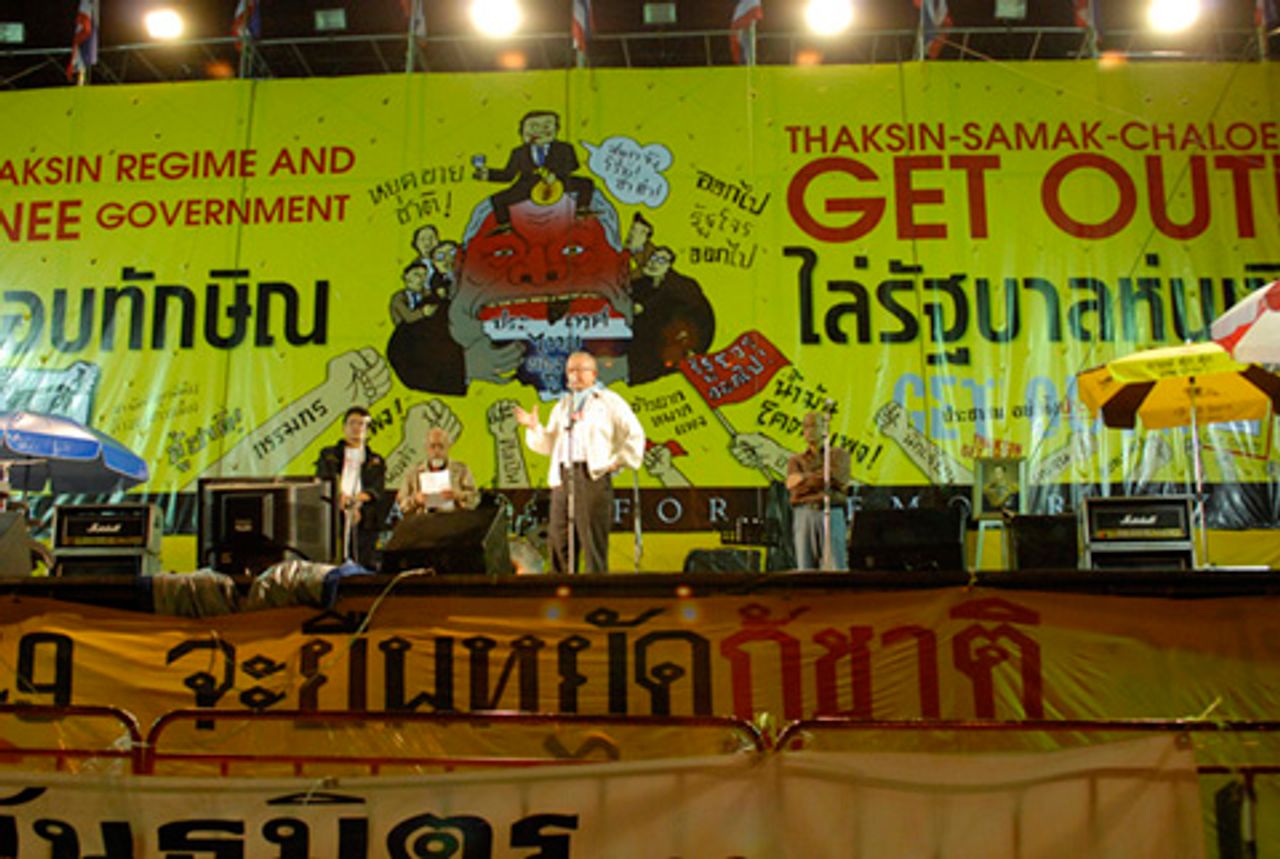For months, Bangkok has been wracked by bitter feuding between pro- and anti-government factions of the Thai ruling elite. The Peoples Power Party (PPP) coalition took office in February after a convincing win at national elections in December. The Peoples Alliance for Democracy (PAD) started its anti-government protests in April. In June, it occupied the Government House compound in central Bangkok, vowing to stay until there was a change of government.
The World Socialist Web Site has analysed all of the major turning points in this continuing political standoff. We present here a series of photographs mostly of two recent events in Bangkok—a PAD protest at the British embassy on October 30 and a large rally by supporters of the pro-government United Front of Democracy against Dictatorship (UDD) on November 1. The WSWS article "Thailand's political crisis intensifies amid economic slowdown", published on November 5, provides the background to these events.
The photographs put faces to some of the leading figures, reveal the extent to which people have been swept up in the conflict, and also something of the deep enmities that have been encouraged. Both the PAD and UDD have powerful backers, have access to sizeable funds and have provided their supporters with t-shirts (yellow for PAD and red for UDD), professionally produced placards and clackers to signal approval. Photographer John Petersen, who provided the images, told the WSWS that he had been shocked at the depth of hostility between the two camps and felt that tensions were reaching a very dangerous point.
At the Government House occupation, protesters are fed and provided with health facilities. Speeches are broadcast on the ASTV news channel owned by PAD leader and media mogul Sondhi Linthongkul. The occupation is fortified by barriers of tyres and razor wire. Full-time guards include paid professionals. Behind PAD stands sections of the traditional Thai elite—the military, state bureaucracy, judiciary and the monarchy as well as layers of small and medium business in Bangkok. PAD's colour yellow is identified with the royalty.
The chief target of PAD's protests is the former prime minister and billionaire Thaksin Shinawatra, who was ousted by an army coup in September 2006 and is currently in exile. His Thai Rak Thai party was the PPP's forerunner.
The initial photographs are of a PAD protest in April, followed by some images of the Government House occupation and then the PAD protest at the British embassy. Speeches and placards condemned Britain for harbouring "wanted criminals"—Thaksin and his wife have been convicted of corruption. After handing over a petition to the British embassy, the protesters marched up Sukhumvit Road to a major shopping mall, led by guards armed with helmets, sticks and bars. Most of the protesters were middle-aged or elderly. Many were professionals—lawyers, teachers and academics. They distributed a rather gruesome DVD of clashes between police and PAD supporters outside the parliament building on October 7.
The UDD rally at the Rajamangala National Stadium was far larger in scope and younger in composition. The Thai media reported an attendance of 90,000. Numbers of people approached the handful of Western photographers present to explain that they had come of their own will and had not been bussed in or paid by anyone—as hostile Thai commentators had suggested. Most were from outside Bangkok in the country's rural north and north-east—the PPP's main political base. As prime minister, Thaksin built up support in rural areas by providing financial handouts to villages, cheap loans and health care.
Both sides falsely claim the banner of "democracy". PAD leaders are openly contemptuous of the rural villagers, who have repeatedly voted the TRT and PPP into office. They call for "new politics" under which 70 percent of parliament would be appointed, not elected. For his part, Thaksin when in office did not hesitate to use anti-democratic measures to intimidate his political opponents. In 2003, he unleashed a police anti-drug campaign that resulted in the extra-judicial murder of hundreds of alleged dealers. Neither faction represents the interests of ordinary working people and their aspirations for basic democratic rights and decent living standards. Behind the bitter feud over the levers of political power, both sides are seeking to protect their own economic positions as the global financial crisis deepens.
Click on the photo below to enter the slideshow. Use the arrows to the left and right of the photos to move through the presentation.

